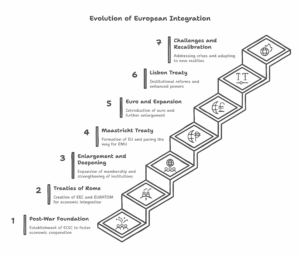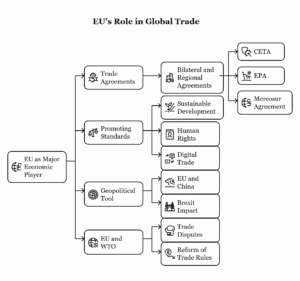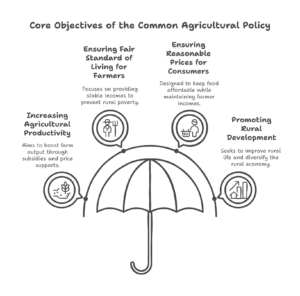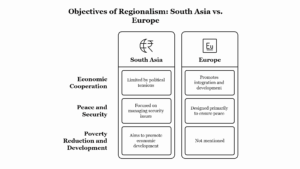-
Continue reading →: Phases of evolution of Canadian federalism
Canadian federalism has undergone several phases of evolution, each shaped by changing political, economic, and social factors. The federal structure of Canada, established in 1867 with the Confederation, has continued to evolve over time, reflecting the growing complexity of the nation. The evolution of Canadian federalism can be understood through…
-
Continue reading →: Composition of the Cabinet of the Canadian Prime Minister
The Cabinet of the Prime Minister of Canada is a key component of the country’s executive branch, playing a central role in the formulation and implementation of governmental policy. The Cabinet is a collective decision-making body, with the Prime Minister as its head. It is composed of senior ministers appointed…
-
Continue reading →: Provisions of the Charter of Rights and Freedoms
The Canadian Charter of Rights and Freedoms is a fundamental part of Canada’s Constitution, which guarantees the protection of civil liberties and rights for all individuals within the country. It was enacted in 1982 under Prime Minister Pierre Trudeau and is an integral part of the Constitution Act, 1982. The…
-
Continue reading →: White Immigrant Groups in Canada
The history of white immigrant groups in Canada is integral to understanding the formation of the country’s social, cultural, and political landscape. Immigration has been a fundamental part of Canadian identity, and the arrival of white settlers and immigrants from Europe has shaped Canada’s development in the pre- and post-Confederation…
-
Continue reading →: Nature of Race Relations in Canada Before the Second World War
Race relations in Canada before the Second World War were marked by significant racial and ethnic stratification, with various communities experiencing systemic discrimination and exclusion. The nature of race relations in Canada during this period was influenced by colonial histories, immigration policies, and the dominant Anglo-Saxon cultural norms that prevailed…
-
Continue reading →: Markers of Nationalism in Canada
Nationalism in Canada has historically been shaped by a variety of factors including political, cultural, linguistic, and economic elements, often reflecting both unity and division within the country. The evolution of Canadian nationalism is marked by the tension between different regional and cultural identities, notably the English-speaking majority, the French-speaking…
-
Continue reading →: Factors that Renewed Interest in Civil Society Organisations in Canada
In the context of Canada, civil society organizations (CSOs) refer to a broad array of non-governmental groups, associations, and networks that operate in the public sphere to represent the interests of different social, political, and economic groups. These organizations are vital in promoting democratic values, engaging in advocacy, and providing…
-
Continue reading →: Growth of Indigenous Organisations during the 1970s in Canada
The 1970s marked a transformative period in the history of Indigenous peoples in Canada, as various Indigenous organizations emerged and gained momentum in advocating for Indigenous rights, recognition, and self-determination. This decade was pivotal in the development of Indigenous activism and organizations, which sought to address the long-standing social, economic,…
-
Continue reading →: Factors that Led to the Anti-Globalisation Movement in Canada
The anti-globalisation movement in Canada, as in other parts of the world, emerged in response to the perceived negative impacts of globalisation on various sectors of society, including economic, social, political, and environmental spheres. Globalisation, the process of increased interconnectedness and interdependence among the world’s economies, cultures, and populations, has…
-
Continue reading →: Characteristics of the Party System in Canada
The party system in Canada is a fundamental aspect of its political structure and functions as a vital mechanism for organizing political competition, structuring government, and articulating the interests of citizens. Canada operates as a parliamentary democracy, where political parties play a crucial role in forming governments, setting policies, and…
-
Continue reading →: Nature of Quebec Separation
The issue of Quebec separation is one of the most complex and debated topics in Canadian politics. The province of Quebec, with its unique French-speaking population, distinct cultural heritage, and historical legacy, has a long-standing movement seeking greater autonomy or full independence from Canada. The nature of Quebec’s desire for…
-
Continue reading →: Features of the Judicial System in Canada
Canada’s judicial system is a cornerstone of its democratic governance, ensuring the rule of law and upholding the rights and freedoms of Canadian citizens. The Canadian judiciary is designed to be independent, impartial, and capable of addressing a broad spectrum of legal matters, from civil and criminal cases to constitutional…
WELCOME!
Yearly Archive
Categories List
- biodiversity
- Canada
- culture
- democracy
- economy
- European Union
- ignou
- india
- International Relations
- nature
- news
- political-philosophy
- political-science
- sustainability
- Uncategorized
- UPSC
Tag Cloud
agriculture ai business Canada china climate climate-change conservation diversity ethics european-union farming feminism finance gandhi health history ignou india KNOWLEDGE liberty mahatma-gandhi marxism nationalism nonviolence philosophy political-philosophy political-science political-theory politics poverty PSC religion renewable-energy russia socialism sociology sustainability sustainable-agriculture sustainable-living technology terrorism travel UPSC women
Term List
- africa
- agriculture
- ai
- aristotle
- bangladesh
- bjp
- business
- Canada
- china
- christianity
- climate
- climate-change
- conservation
- critical-theory
- digital-marketing
- diversity
- ecology
- elections
- ethics
- europe
- european-union
- faith
- farming
- fascism
- featured
- feminism
- feminist
- finance
- frankfurt-school
- freedom
- fundamentalism
- gandh
- gandhi
- gardening
- gender
- gender-equality
- global-warming
- government
- health
- herbs
- history
- human-rights
- ignou
- india
- inequality
- intellectual-property
- italy
- karl-marx
- KNOWLEDGE
- language
- law
- learning
- lenin
- liberty
- lifestyle
- linguistics
- mahatma-gandhi
- marx
- marxism
- mental-health
- MPS
- multicultural
- multiculturalism
- nationalism
- natural-remedies
- nonviolence
- organic-farming
- patents
- philosophy
- political-philosophy
- political-science
- political-theory
- politics
- pollution
- poverty
- PSC
- recycling
- religion
- renewable-energy
- russia
- socialism
- sociology
- soviet-union
- spirituality
- sustainability
- sustainable-agriculture
- sustainable-living
- teaching
- technology
- terrorism
- trademarks
- travel
- UPSC
- water
- water-conservation
- wellness
- wildlife
- women
- women-empowerment





